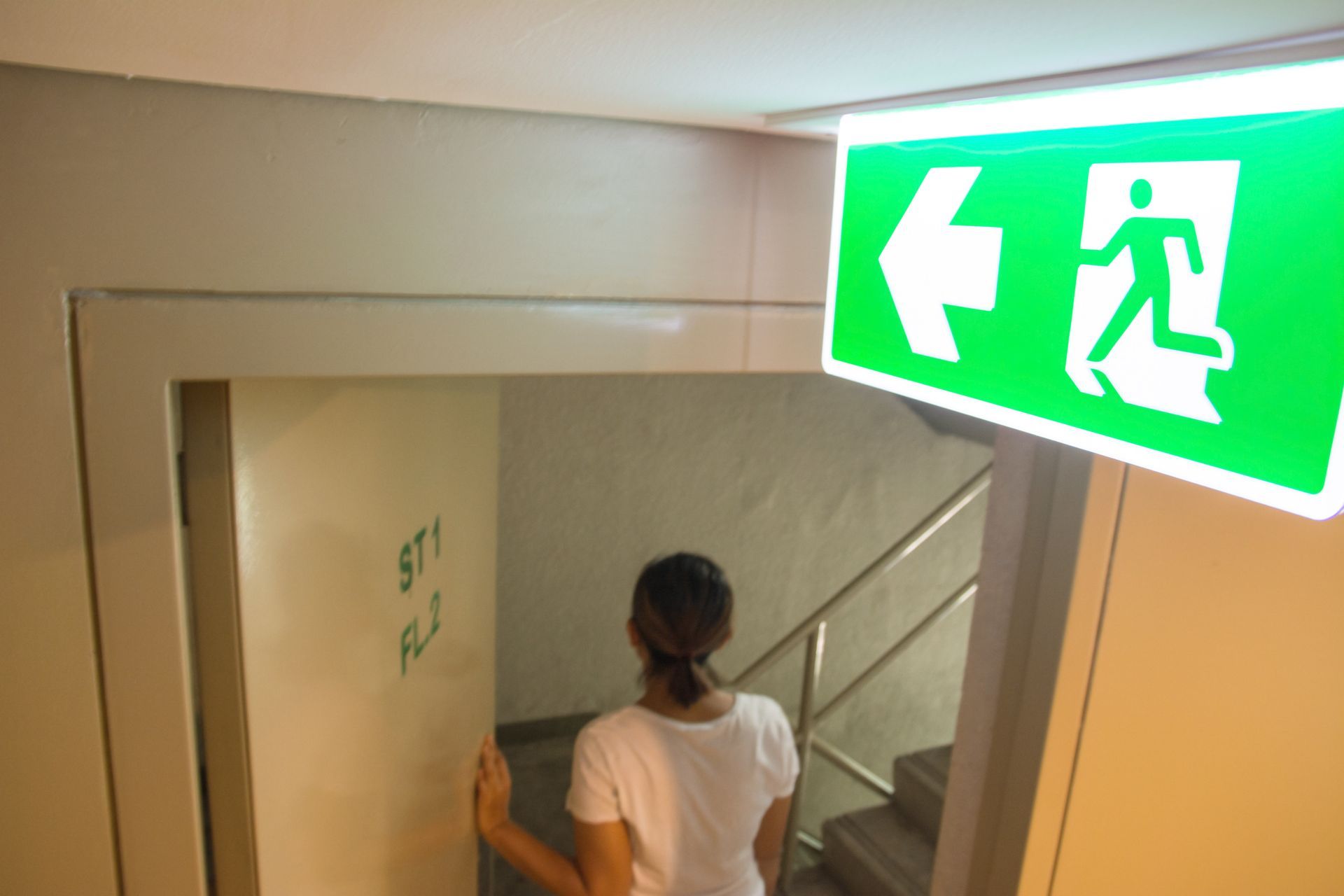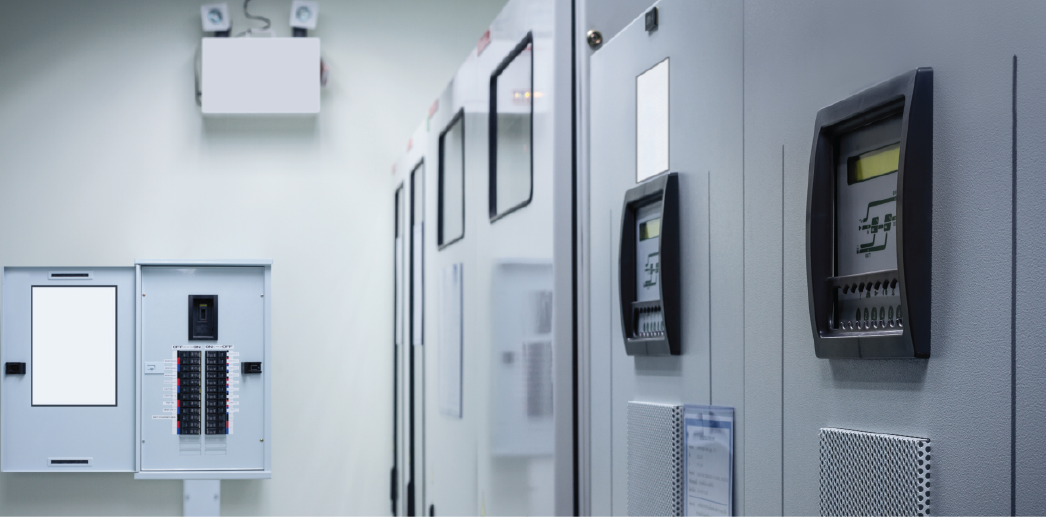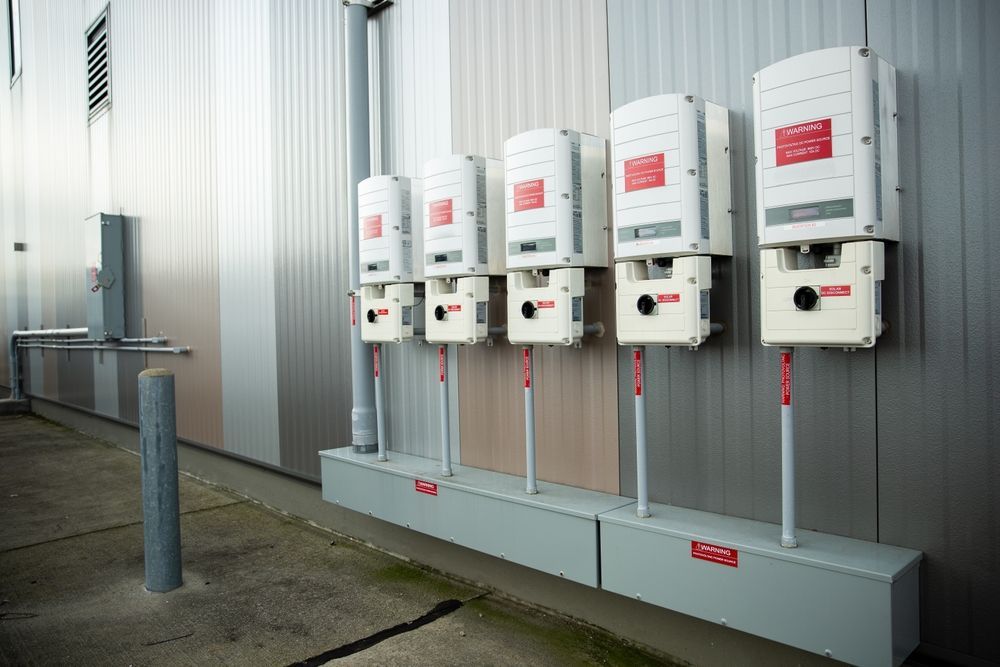Complying with OSHA Emergency Lighting Requirements
Share this article:
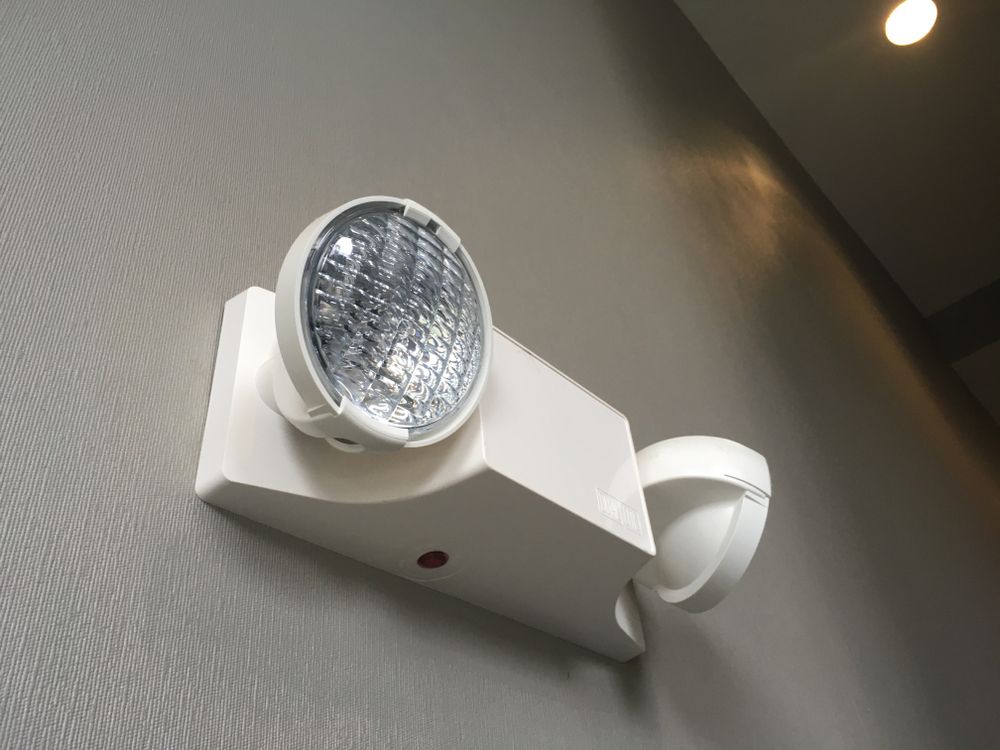
Businesses understand the urgency of having emergency lighting equipped in their buildings. Emergency lighting is essential to provide enough illumination for customers to make their way to available exits, for workers to safely finish certain tasks, and for maintenance workers to troubleshoot potential electrical problems. The Occupational Health and Safety Administration (OSHA) also has emergency lighting requirements that businesses must follow to stay in compliance. Learn more about OSHA emergency lighting requirements and how emergency lighting inverters from Lighting Inverter Supply offer the perfect solution.
Importance of Emergency Lighting in the Workplace
When the regular lights go out, either from an accident, weather, or power grid failure, it can create a general feeling of panic for workers and customers. Businesses will normally tell everyone to make their way to the emergency exits, yet it can be difficult to move to these exits using just the natural light from nearby windows. It can also become dangerous for customers and employees to navigate their way around store shelves and stairwells. Having emergency lighting can prevent accidents and potential liability lawsuits as people can safely make their way to the exits.
Workers also need emergency lighting when finishing a range of tasks. For example, workers in a warehouse may operate mechanical lifts to reach high shelves or forklifts to move pallets of goods. If the lights go out, it can make it difficult for workers to operate machine controls. Emergency lighting offers the necessary solution for workers to safely end their tasks and get down from equipment.
OSHA's Emergency Lighting Requirements
OSHA has clearly stated mandates for all occupied businesses to have emergency lighting available for all exits under the following regulation: 1910.37(b) - Maintenance, safeguards, and operational features of exit routes. Failure to comply with these regulations may result in penalties and/or fines. The following requirements are standard for all industries.
Each exit route must be adequately lit so that employees and customers with normal sight can see their way along the exit route. This requirement normally means that lighting should be evenly spaced so that the entire corridor or way to the exit has enough illumination for people to safely make their way out of the building.
Each exit sign must have the surface illuminated by a reliable light source to a surface value of at least 54 lux (lumens per square meter or five-foot candles). The exit lighting requirement ensures that there is enough illumination for people to see exit signs from afar in the dark so that they can make their way to the exit door.
Tips to Comply with OSHA Emergency Lighting Requirements
Businesses will seek out cost-effective and safe solutions to meet OSHA emergency lighting requirements. These solutions often involve using emergency lighting that runs on backup battery power. Since most lights operate on alternating current (AC) and batteries provide direct current (DC), a lighting inverter is needed to convert the DC battery power to AC energy to power the lights. To ensure that you are complying with OSHA regulations, here are some helpful tips.
Proper Maintenance & Performance
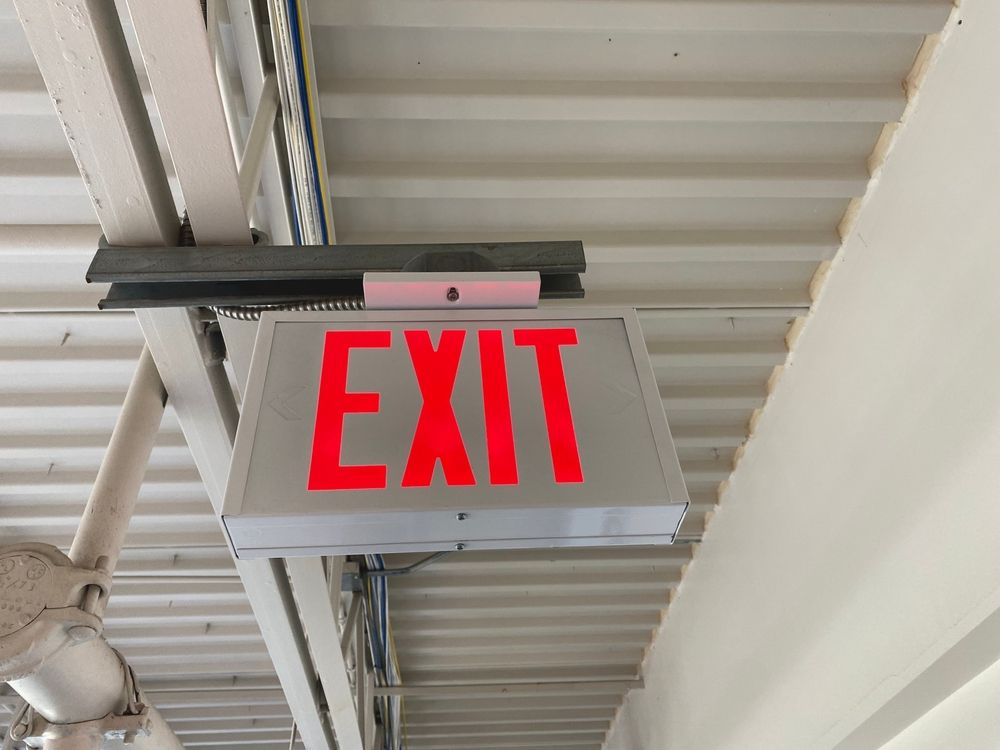
When installing and maintaining emergency lighting, businesses should follow the National Fire Protection Association (NFPA) code requirements for testing, maintenance, and performance. NFPA 70 general requirements cover wiring, mounting, storage battery, and equipment standards. Proper performance of the emergency lighting should involve the system providing at least 90 minutes of illumination and should begin automatic operation less than 10 seconds after the power goes out.
Emergency lighting and systems should also be load tested and have the right capacity and rating for all loads at the same time. Regular maintenance inspections of the light bulbs, batteries, and inverter system should be performed to ensure that the equipment is operating at desired levels. The emergency lights should be tested for 30 seconds once every 30 days or 1.5 hours annually.
Illumination Guidelines
Since Illumination guidelines dictate that the path to exits needs to be bright enough for people to see, spacing out emergency lighting ensures that there are no dark areas between light fixtures. However, inspecting each individual lighting system can take up time and manpower for maintenance workers.
One way to make the testing and maintenance of emergency lighting systems easier is to use a centralized lighting inverter system. Centralized emergency lighting inverters provide enough emergency backup power to every individual lighting system throughout the entire building. Workers can manage and maintain the emergency lighting inverter system at one location to ensure that all lighting works are specified to stay in compliance.
Emergency Exit Sign Requirements
A common issue faced with proper illumination of exit signs is that battery packs can have varying capacities for their battery cells. If there is a weak cell inside the pack, it could cause the sign to not be fully illuminated or have weak illumination to where a person can't properly see it. Emergency lighting inverters can get around this issue when converting the DC battery power to AC lighting power so enough current is used to fully illuminate the sign. This method can meet OSHA code requirements for exit signs to be visible along the exit path.
OSHA Enforcement & Penalties for Non-Compliance
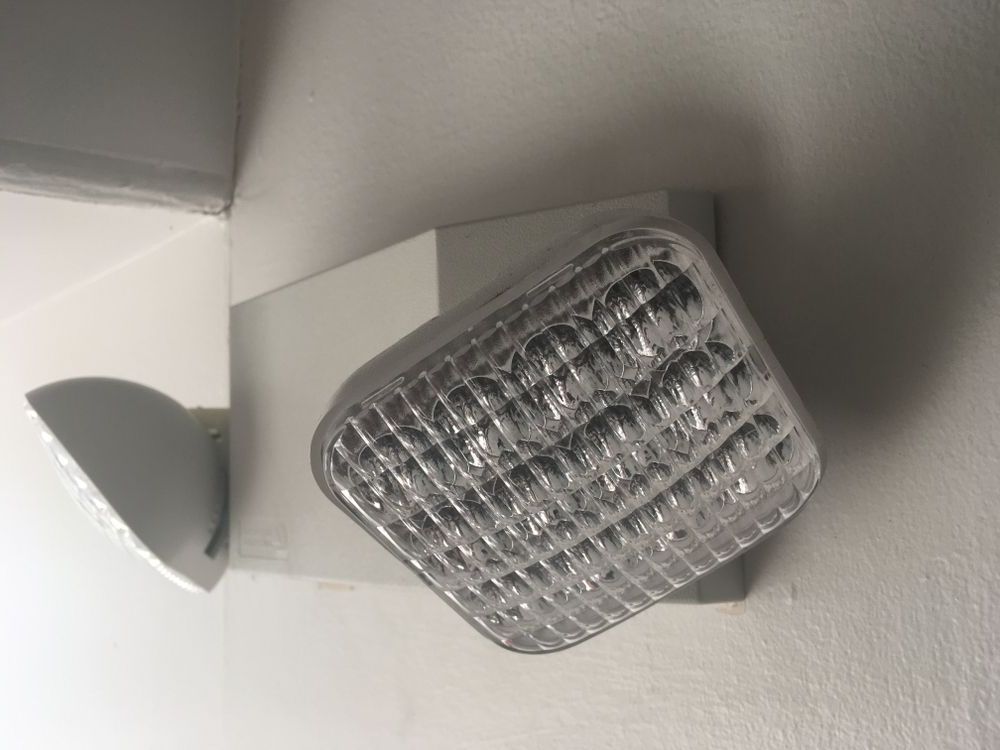
OSHA has strict enforcement when it comes to emergency lighting standards to prevent worker accidents and death in commercial and industrial business settings. Companies that fail to comply with NFPA standards or who commit willful OSHA code violations could face up to hundreds to thousands of dollars in fines. A basic code violation could result in upwards of a $70,000 fine. If you violate OSHA regulations and this violation results in the death of a worker or customer, a business owner may face penalties of up to $250,000 as well as jail time.
How Can Lighting Inverter Supply Help?
At
Lighting Inverter Supply, our company is trusted by businesses and commercial spaces all over the country to provide affordable and necessary solutions to help maintain OSHA and NFPA compliance. We provide single-phase lighting inverters and three-phase lighting inverters for a range of
industries including schools, apartment complexes, healthcare facilities, retail stores, restaurants, office buildings, hotels, and many others.
Contact us today to learn more about our products.
Connect with Us:
Request a Quote From a Product Specialist
Experienced Product Representatives are on hand to send you information and quotations for equipment. If you need help with sizing, installation planning, or general questions about product please fill in the appropriate form and someone will contact you shortly. You may also call 844-501-1887 to get a direct product representative.

